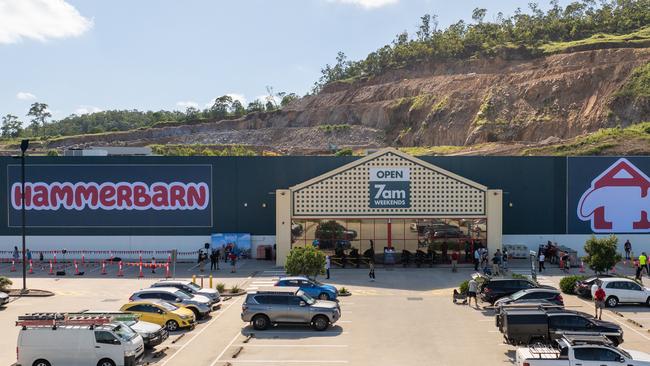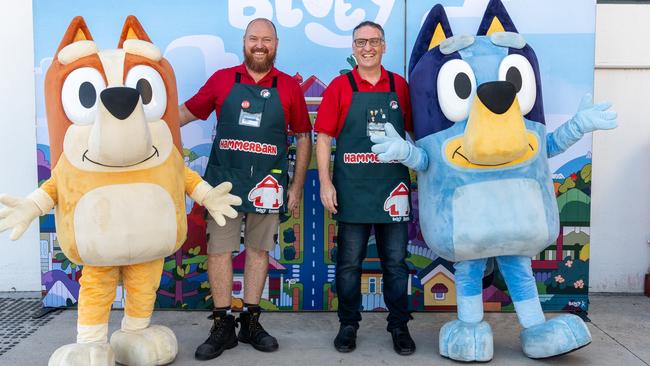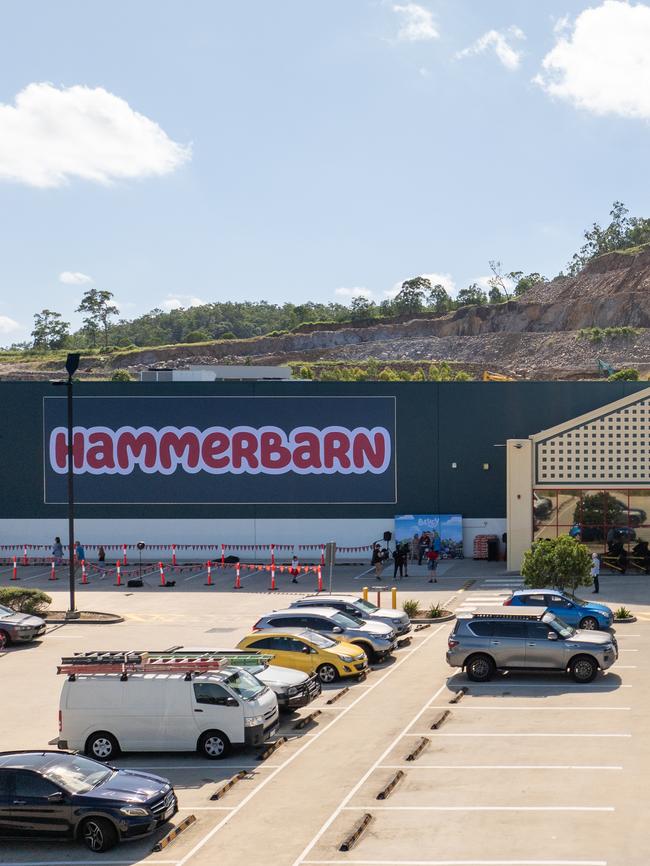Bluey and Bunnings: a tale of two iconic Australian brands
The news of a collaboration between Bunnings and animated TV series Bluey reached more than 40 million people in Australia and New Zealand. The Growth Agenda reports on what made the February initiative so beneficial for the two iconic Australian brands.

A collaboration between two of Australia’s most iconic brands – Bunnings Warehouse and animated TV series Bluey – has yielded major success for both parties.
In February, more than 110,000 children attended 3900 Bluey-themed DIY workshops across all Bunnings locations around Australia and New Zealand, as seven of the warehouses were also temporarily rebranded as “Hammerbarn”, named after a highly popular Bluey episode of the same name.
The Hammerbarn partnership was initiated by Bluey’s co-commissioner, global distributor and licensor BBC Studios, when the broadcaster’s director of brand and licensing in Australia, Kate O’Connor, approached Bunnings managing director Michael Schneider around a year ago.
Since the series first aired on screens in 2018, the show’s adorable protagonist – a Blue Heeler puppy named Bluey – and canine family has set a new benchmark in the cultural Zeitgeist for childrens’ television.
The series has also had a similarly captivating effect on older audiences, with 90 per cent of the series co-viewed between children and parents. Bluey’s footprint is also far reaching; it’s available in 60 countries and 30 languages.
But in Australia, the Bluey brand carries a particular relevance and cultural capital; it is an Australian-born and produced show, after all, which comes from creative production company Ludo Studios. Initially, it was Ludo that took its inspiration from Bunnings warehouses to create its Hammerbarn episode, which ranks in the top 15 most popular Bluey episodes of the 150 that have been created to date.
The BBC’s Ms O’Connor told The Growth Agenda neither BBC Studios nor Bunnings purchased advertising space on media channels, and instead concentrated its resource on transforming the Bunnings warehouses, as well as sharing content on their own channels and social media.

“The campaign was largely about the (Bluey) fan and the customer and bringing that joy. That was a key performance indicator that we certainly both shared,” Ms O’Connor said of the collaboration.
“We delivered what we set out to do, which was to deliver a unique experience that captivated fans, captivated media and brought the world of Bluey to life like never before,” she added.
Hammerbarn also became the top trending topic on social media in Australia and New Zealand at the time. News of the collaboration spread far and wide.
Dentsu Creative’s public relations business was engaged to amplify the collaboration, which included a campaign that supported 1845 stories in Australian and New Zealand-based media.
It is estimated to have reached an audience of 41.4 million people, according to media monitoring platform, Streem.
Dentsu Creative Public Relations’ chief public relations officer, Tim Powell explained that both BBC Studios and Bunnings embraced the “full potential” of the collaboration to make it a success.
“From completely rebranding seven Bunnings stores across Australia and New Zealand, to updating kids’ trolleys, hosting themed DIY workshops and creating limited edition merch, the team invested in every touch point of the Hammerbarn experience, delivering memorable moments for customers from the minute they set foot in store,” Mr Powell said.
The collaboration itself was a rare one; the volume of enquiries from brands that want a slice of the Bluey action far outpaces the number of collaborations BBC Studios undertakes for the series.
It was also a similar rarity for Bunnings to replace its logo on the exterior of its warehouses.
BBC Studios’ Ms O’Connor said: “Everything we do, not just with brand partnerships but across our entire ancillary business, we’re really resolute about what we will and won’t do with the brand.
“That really stems from having a show that is so deeply loved and extremely authentic in every way.”

In what was clearly a mutually beneficial and values-aligned partnership, Bunnings chief customer officer Ryan Baker reflected on the February activation at its warehouses similarly.
“We were really trying to create that authentic feeling for our customers to be able to come into the store and really engage with this collaboration. But there is no doubt that emotional connection to Bunnings (and) to Bluey is so strong,” he said.
“It had to be that authentic partnership. (Bunnings) is such a trusted brand and Bluey is similar. The collaboration really aligned perfectly with our wider philosophy of thinking about our customers’ different life stages as well,” he said, adding that the initiative was also successful at engaging with younger generations, and getting them excited about Bunnings.
“We have customers who shop across all different stages of their life. So for us this absolutely fit in with kids getting excited and coming to Bunnings. And we really saw that come to life throughout the month of February to an extent that we’ve never seen before,” Mr Baker said.
Although Bluey merchandise was sold, including the wildly popular garden gnomes based on characters in the show, the success of the partnership was measured in less traditional terms, and was more about brand building, rather than a short-term sales boost. “We didn’t do this with necessarily that traditional return-on-investment kind of lens, because for us, this is a long term initiative,” Mr Baker said.
“For us, the feedback we had from customers was probably the richest piece of all, not necessarily sales or any of those things.
“Cost of living as it is today, to have a free activity for families to be able to come in and do, I think it’s really important. And our bricks and mortar stores are absolutely perfect to create that environment.”
It’s also rare to see such major brands break away from their usual identities to prioritise another one entirely; in this case, brand Hammerbarn.

The project started as a co-branding exercise, but didn’t feature either Bunnings or BBC Studios, instead leaning on the full cultural power of the Bluey identity.
“It’s not lost on me that you really need to be at the forefront of your industry to be able to pull off something of the scale and magnitude that we did,” Ms O’Connor said. “Bunnings and Bluey are at the forefront of our respective industries, but lots of companies in Australia fit that bill. Lots of companies in Australia are at the forefront of their industries.”
The real challenge to achieving the success the collaboration was met with, Ms O’Connor said, was delivering the project.
“Getting both companies to do something like this involves a level of humour and a growth mindset, being entrepreneurial, taking risks, recognising the value of marketing, and being able to deliver that growth and strategy in multidimensional ways,” she said.
“In this particular case, it really involved agility as well. It wasn’t part of a five-year plan. It didn’t sit in budget numbers. It was really just about seizing opportunity and maximising it.
“And I just think it’s really great that the executives – and I don’t just mean Ryan and I – that the CEOs, the CFOs, the whole C-Suites in both companies were smart enough and brave enough to give it a go.”







